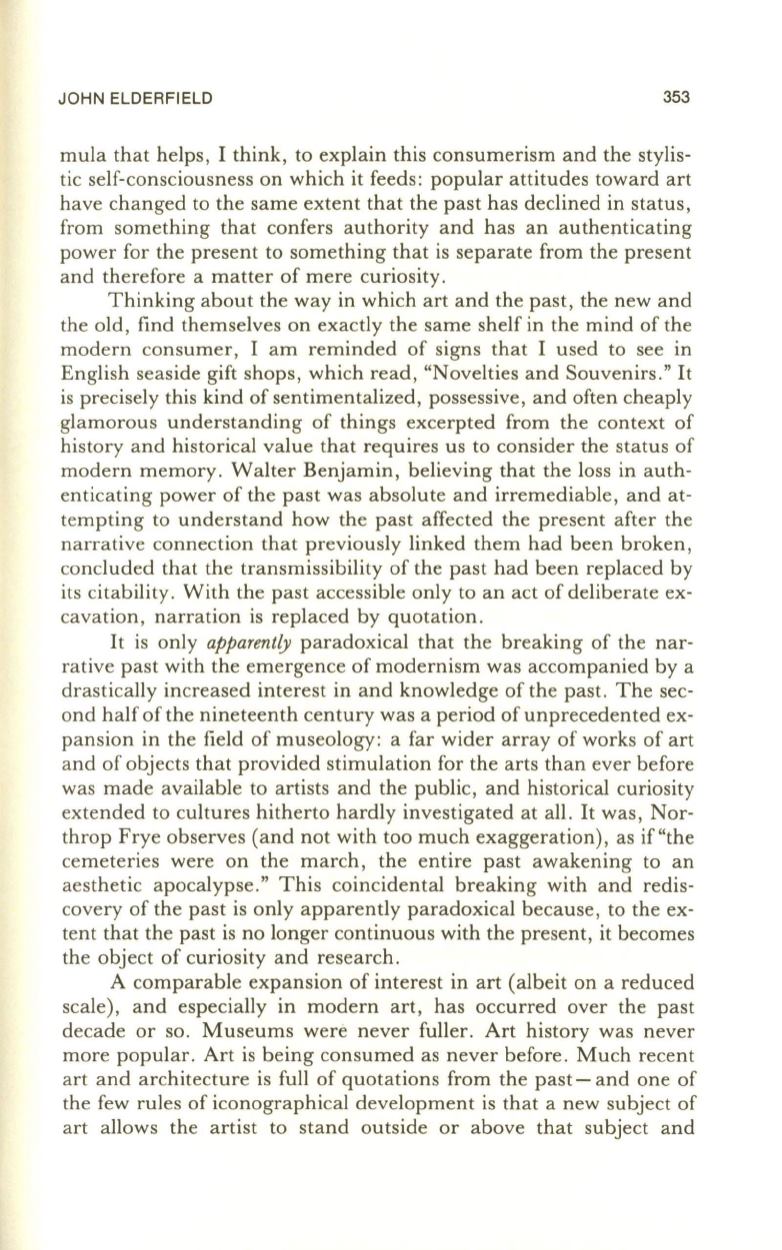
JOHN ELDERFIELD
353
mula that helps, I think, to explain this consumerism and the stylis–
tic self-consciousness on which it feeds: popular attitudes toward art
have changed to the same extent that the past has declined in status,
from something that confers authority and has an authenticating
power for the present to something that is separate from the present
and therefore a matter of mere curiosity .
Thinking about the way in which art and the past, the new and
the old, find themselves on exactly the same shelf in the mind of the
modern consumer, I am reminded of signs that I used to see in
English seaside gift shops, which read, "Novelties and Souvenirs."
It
is precisely this kind of sentimentalized, possessive, and often cheaply
glamorous understanding of things excerpted from the context of
history and historical value that requires us to consider the status of
modern memory. Walter Benjamin, believing that the loss in auth–
enticating power of the past was absolute and irremediable, and at–
tempting to understand how the past affected the present after the
narrative connection that previously linked them had been broken,
concluded that the transmissibility of the past had been replaced by
its citability . With the past accessible only to an act of deliberate ex–
cavation, narration is replaced by quotation.
It is only
apparently
paradoxical that the breaking of the nar–
rative past with the emergence of modernism was accompanied by a
drastically increased interest in and knowledge of the past. The sec–
ond half of the nineteenth century was a period of unprecedented ex–
pansion in the field of museology: a far wider array of works of art
and of objects that provided stimulation for the arts than ever before
was made available to artists and the public, and historical curiosity
extended to cultures hitherto hardly investigated at all.
It
was, Nor–
throp Frye observes (and not with too much exaggeration), as if "the
cemeteries were on the march , the entire past awakening to an
aesthetic apocalypse ." This coincidental breaking with and redis–
covery of the past is only apparently paradoxical because , to the ex–
tent that the past is no longer continuous with the present, it becomes
the object of curiosity and research .
A comparable expansion of interest in art (albeit on a reduced
scale), and especially in modern art, has occurred over the past
decade or so. Museums were never fuller. Art history was never
more popular. Art is being consumed as never before. Much recent
art and architecture is full of quotations from the past - and one of
the few rules of iconographical development is that a new subject of
art allows the artist to stand outside or above that subject and


